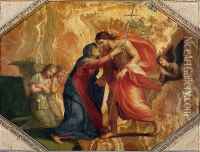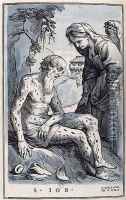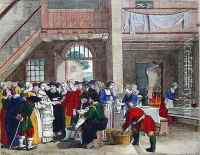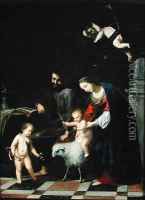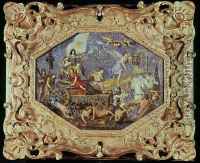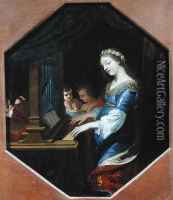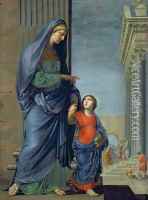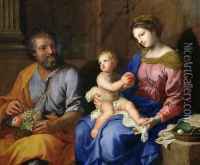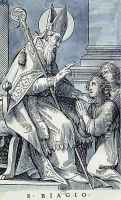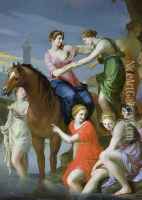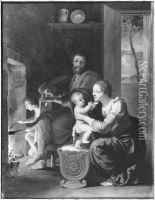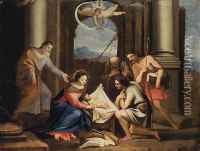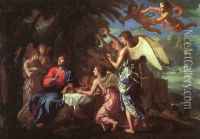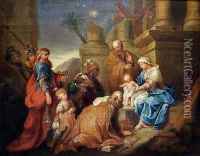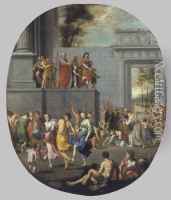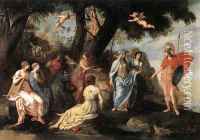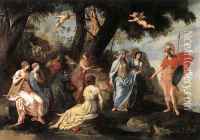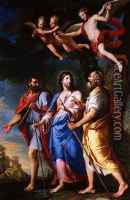Jacques Stella Paintings
Jacques Stella was a French painter and draughtsman, known for his works that reflected the Baroque style infused with a classical quality. Born on September 5, 1596 in Lyon, France, Stella came from a family with artistic ties; his father, François Stella, was a miniaturist and his brother, François the Younger, was also involved in the arts. His uncle, Jacques Stella, after whom he was named, was a painter for the King of Spain.
Stella received his early training from his father and later, after his father's death, he traveled to Florence, Italy, at the age of twelve. In Florence, he was under the guardianship of his uncle, Philippe de Champaigne, who was a founding member of the French Royal Academy of Painting and Sculpture. Stella's early Italianate works were influenced by the Mannerist style, and he spent significant time in Florence and Rome, coming into contact with the works of the old masters and the burgeoning Baroque movement.
During his time in Italy, Stella became a protégé of the powerful Barberini family and received commissions that allowed him to study classical antiquity and the Renaissance masters, furthering his artistic education. He was particularly influenced by the works of Raphael and the Carracci family. In 1634, Stella returned to France, and through his Italian connections, he quickly gained favor at the court of Louis XIII.
Stella’s work began to reflect a synthesis of classical calm with the drama of Baroque art. He became known for his small, finely detailed historical and mythological paintings, which often featured themes of love and family. His style was characterized by clear, harmonious compositions and a subtle use of color.
In Paris, Stella was appointed Painter to the King, and he worked on a number of decorative projects for the royal residences. His success allowed him to open a teaching studio where he trained a number of young artists, including his niece, Claudine Bouzonnet-Stella, who became a successful engraver.
Jacques Stella never married and was known for his devout religious beliefs. He was closely involved with the Jansenist community within the Catholic Church, which influenced not only his personal life but also the spiritual dimensions of his work. Stella died in Paris on April 29, 1657. After his death, his niece Claudine took charge of his estate and published a collection of his works. Stella’s legacy is that of an artist who bridged the divide between the Italian Renaissance and French Baroque styles, influencing the French artistic scene through both his works and his teaching.
